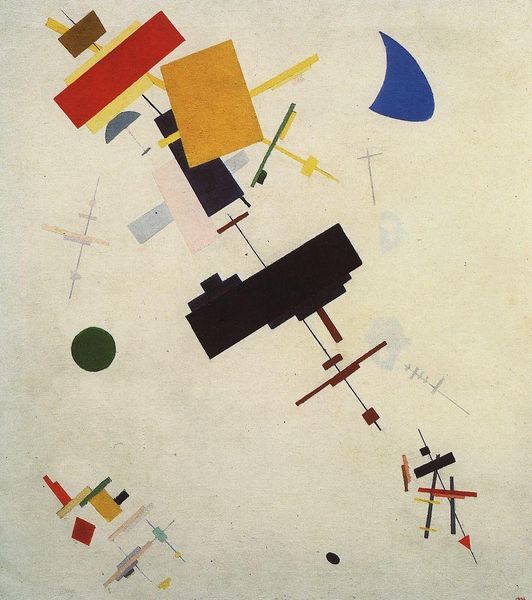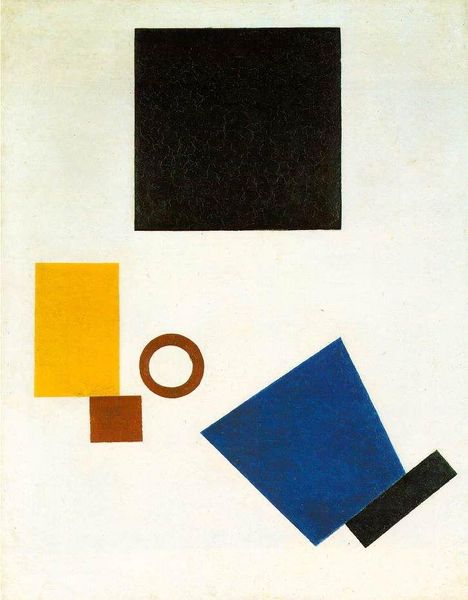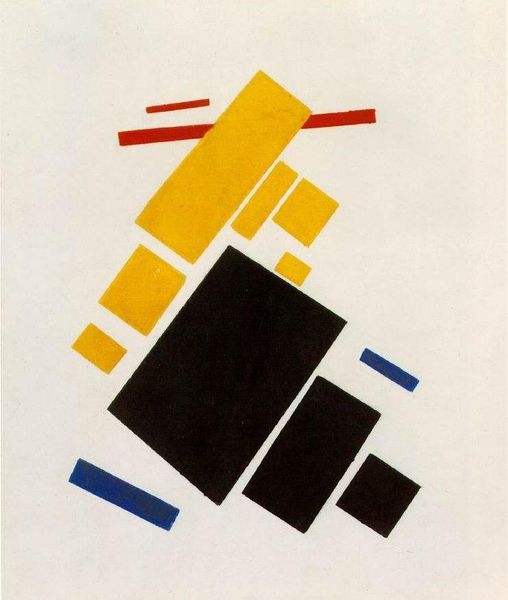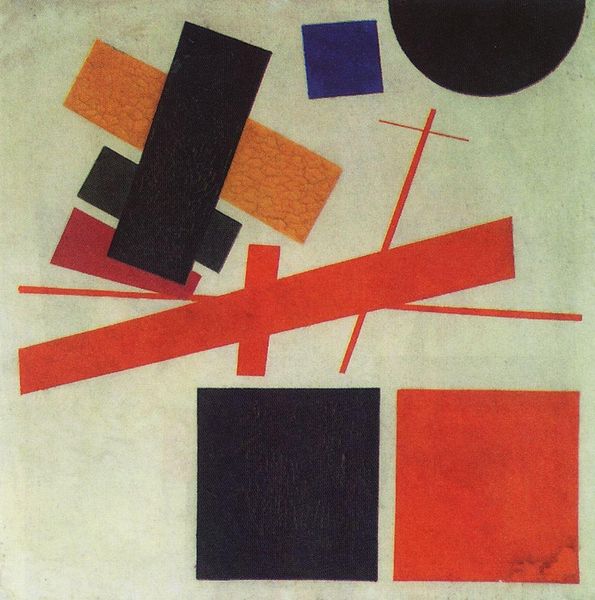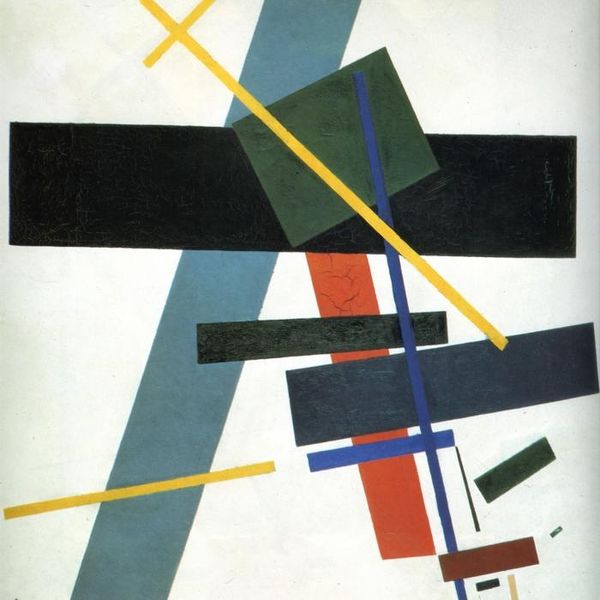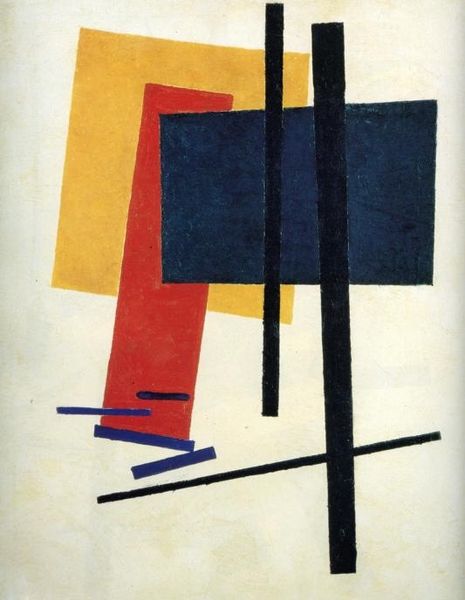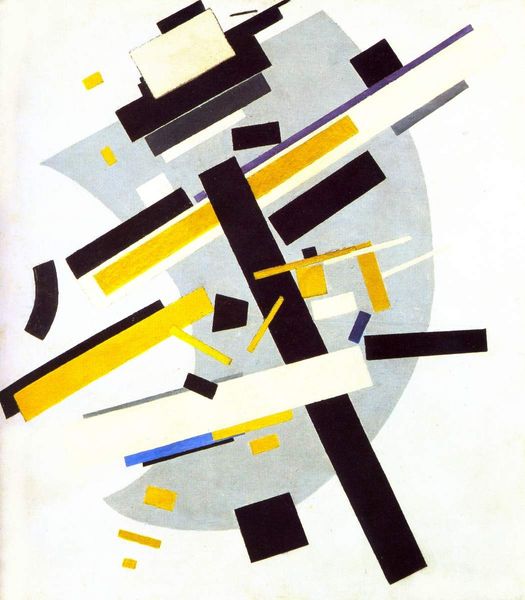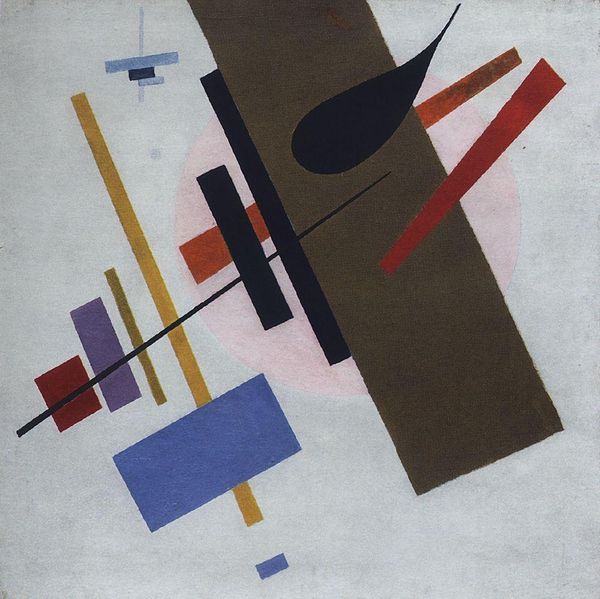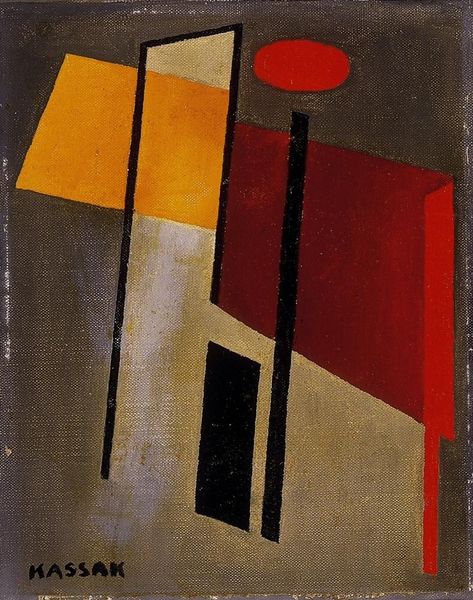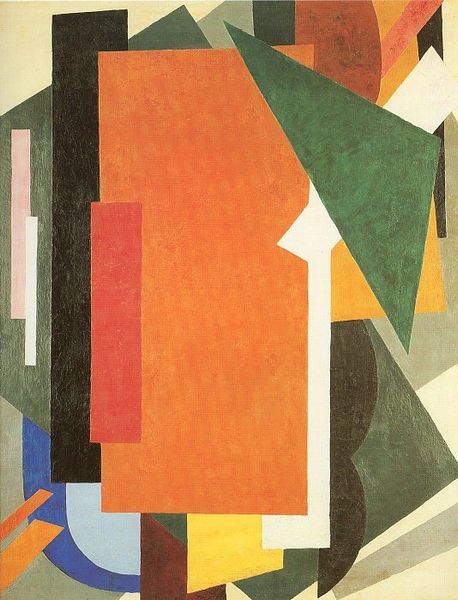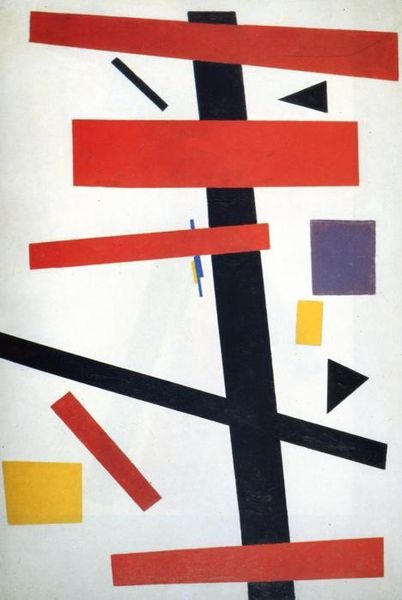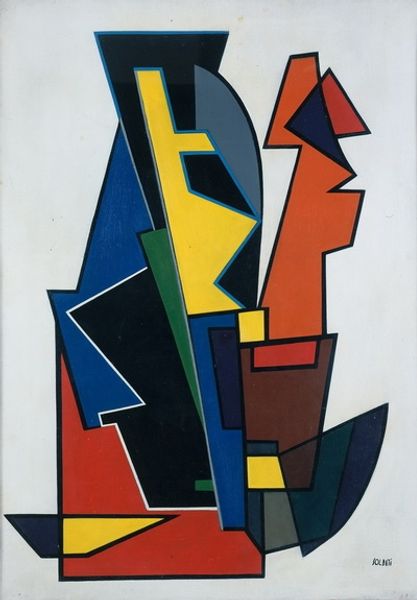
painting, oil-paint
#
non-objective-art
#
painting
#
oil-paint
#
form
#
geometric
#
abstraction
#
line
#
russian-avant-garde
#
modernism
#
suprematism
Copyright: Public domain
Curator: Before us hangs Kazimir Malevich's "Suprematic Painting," crafted in 1916 using oil paint. Editor: It strikes me immediately with its dynamic imbalance. These geometric shapes, rendered in stark, flat colors, seem to float, almost like debris after an explosion. Curator: Malevich was part of the Russian avant-garde movement, particularly focused on Suprematism. It was a push to escape representational art. The "zero degree" as he put it. A quest for pure feeling. Editor: Pure feeling conveyed through pure form, certainly. Notice how the colors themselves—the deep blue square, the sharp green rectangle—command attention. It’s not about representation; it’s about the raw power of color and shape in relation to each other. The texture and the slight variations in the paint itself almost become a metaphor for artistic struggle to distill essential elements. Curator: It’s key to understanding the revolutionary period in Russia and how that shaped his vision. Consider how these works departed from traditional subject matter; you begin to see them reflecting broader societal shifts, an embrace of industrial forms, maybe, but mostly, the idea of stripping things down. Labor became essential and it reframed how people thought about society. Editor: It's also about visual relationships, it challenges viewers to decode the language of shapes, each block, each line contributing to an overarching sense of rhythm. Curator: The impact, initially shocking to many, challenged pre-conceived ideas about what constitutes art. It’s a dialogue on production versus fine art. The starkness almost questions capitalist modes, almost an embrace of craft but in industrial contexts. Editor: Ultimately, a canvas like this challenges the way we perceive reality and aesthetic value. "Suprematic Painting," at its heart, invites you to a conversation about the core of art itself. Curator: I agree, it is a striking expression on an art movement built upon political foundations and a move from prior conventions of style. The essence lies, perhaps, in this quest to uncover these relationships with labor.
Comments
No comments
Be the first to comment and join the conversation on the ultimate creative platform.
